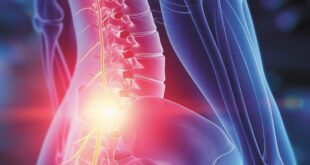 With diabetes on the rise, it pays to learn about this disease, even if you don’t think it will happen to you. It is estimated that over twenty-four million Americans are diabetic, and an additional five million are walking around with diabetes and are unaware of the condition. Diabetes is a major cause of premature strokes and heart attacks, of amputations, and of winding up on kidney dialysis machines. It can significantly complicate pregnancy for both the mother and her unborn child. It is not yet curable. However, its symptoms and insidious damage can certainly be reduced with proper treatment.
With diabetes on the rise, it pays to learn about this disease, even if you don’t think it will happen to you. It is estimated that over twenty-four million Americans are diabetic, and an additional five million are walking around with diabetes and are unaware of the condition. Diabetes is a major cause of premature strokes and heart attacks, of amputations, and of winding up on kidney dialysis machines. It can significantly complicate pregnancy for both the mother and her unborn child. It is not yet curable. However, its symptoms and insidious damage can certainly be reduced with proper treatment.
Effects of type 2 diabetes can trigger and strike you anytime. This killer disease can ruin your life. Are you aware of the symptoms? How can you prevent it? Learn more about diabetes in the following paragraphs.
What is Diabetes?
It is a form of metabolic disease in which a person can’t produce enough insulin or not produce it all. In this state, sugar in the blood can’t be metabolized for the use by the body. It can be irreversible and debilitating disease which can affect many organs of the body, like the heart, kidney and the eyes.
There are two major types of diabetes, called type 1 and type 2. Type 1 diabetes was also formerly called insulin dependent diabetes mellitus (IDDM), or juvenile onset diabetes mellitus. Of all the people with diabetes, only approximately 10% have type 1 diabetes and the remaining 90% have type 2 diabetes. Type 2 diabetes, previously referred to as non-insulin dependent diabetes mellitus (NIDDM), or adult onset diabetes mellitus (AODM). In type 2 diabetes, patients can still produce insulin, but do so relatively inadequately for their body’s needs, particularly in the face of insulin resistance.
Type 2 diabeties may also, later progress to requre insulin to manage their diabetes.
Diabetes often goes undiagnosed because many of its symptoms seem so harmless. Recent studies indicate that the early detection of diabetes symptoms and treatment can decrease the chance of developing the complications of diabetes.
Signs and Symptoms of Diabetes
. Frequent urination
. Unusual thirst
. Extreme hunger
. Unusual weight loss
. Extreme fatigue and Irritability
. Frequent infections
. Blurred vision
. Cuts/bruises that are slow to heal
. Tingling/numbness in the hands/feet
. Recurring skin, gum, or bladder infections
If you have one or more of these diabetes symptoms, it is recommended that you follow up with your doctor right away. Remember, the earlier diabetes is detected, the better it can be managed.
No Symptoms? You May Still Have Diabetes.
Often people with type 2 diabetes have no symptoms. This disease if diagnosed early can be prevented if you know the risk factors and the symptoms which accompany the disease. Risk factors include genetics, family history, poor nutrition, lack of exercise, sedentary lifestyle, smoking, gestational diabetes and other underlying medical conditions.
If you have any of the above symptoms and/or risk factors, a doctor may offer diagnostic examinations to determine if you have diabetes. Blood glucose test and oral glucose tests are the primary diagnosing procedures done. Once results are in, the doctor will give you recommendations and advice on what steps you should take next.
To prevent diabetes, you must learn to minimize your risk of developing the disease. When you feel you have the risk factors try to avoid them, or if not, then lessen them. Preventing the disease is much easier than treating it.
Internal Medicine Practices
Lady Lake – The Villages
(352) 391-5299
Leesburg
(352) 319-6800
Tavares
(352) 742-1707
Tags featured
Check Also
Revitalize Your Mental Health with the Theta Chamber at Keep Young Wellness Center
By Allen T. Stanley, Practitioner At the forefront of innovative wellness technology, Keep Young Wellness …
 Central Florida Health and Wellness Magazine Health and Wellness Articles of the Villages
Central Florida Health and Wellness Magazine Health and Wellness Articles of the Villages



